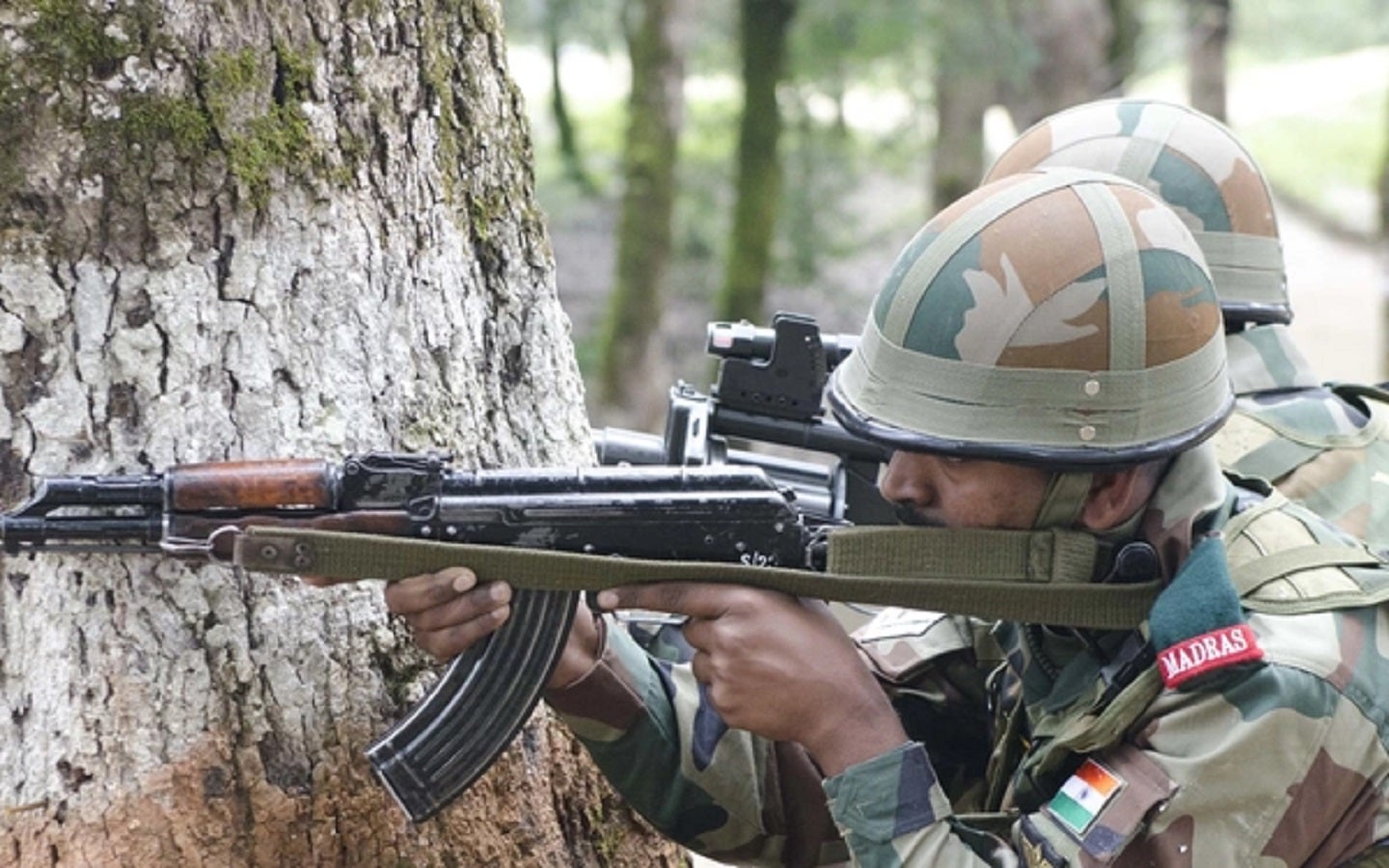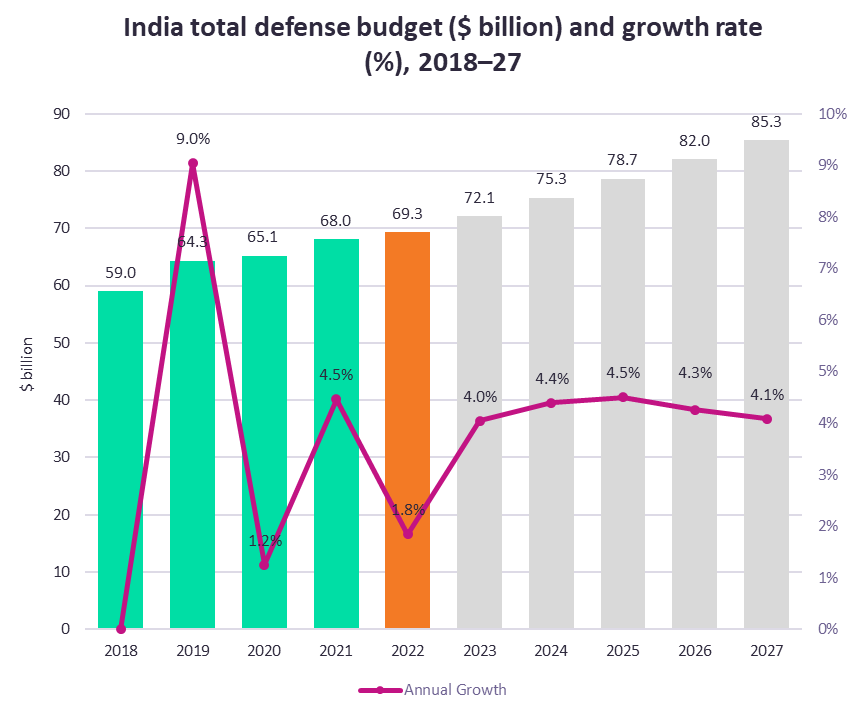
India has allocated $72.6bn to the Defence Research Development Organisation (DRDO), a body which oversees the research and development process in the country’s defence sector. Known as an area India invests significantly in, its Union Budget for the Financial Year 2023-24 is a 13.1% increase in defence research & development (R&D) expenditure.
The increase in defence spending will see the South Asian country invest in more military equipment and other capabilities to become self-reliant in critical defense technologies and systems. Russia is the largest exporter of arms to India.

Discover B2B Marketing That Performs
Combine business intelligence and editorial excellence to reach engaged professionals across 36 leading media platforms.
Frosty borders and regional security
India is investing money to try and accelerate the development of technology, such as India’s first indigenous aircraft carrier INS Vikrant (IAC-1). The cause of this expenditure is driven by the need to replace the country’s ageing military hardware to ensure adequate protection from potentially hostile actions by China and Pakistan.
China, like Pakistan, refuses to accept the McMahon Line that demarcates India from China. Despite numerous attempts at negotiation, neither India nor China is willing to give up its claim over these vast areas, and the Line of Actual Control (LAC) still needs to be better defined.
The country’s increased R&D defence spending also comes amid a backdrop of a fracture in the relationship between China and India. The most recent tensions escalated between China and India on 15 June 2020, leaving at least 20 Indian soldiers dead.
The threat is not a new one. The incident marked the first time any such skirmish resulted in deaths after the 1962 Indo-China war and marked a significant escalation in Indo-China hostilities.

US Tariffs are shifting - will you react or anticipate?
Don’t let policy changes catch you off guard. Stay proactive with real-time data and expert analysis.
By GlobalDataIndia has also witnessed China’s constant maritime expansionism in the Indian Ocean and has seen the country develop ports in Pakistan, Sri Lanka, Bangladesh, and Myanmar, leading to significant concerns for the Indian Government.
Abhijit Apsingikar, aerospace, defence, and security analyst at GlobalData, offers his view: “Growing presence along the Himalayan frontier, cross-border incursions and increased naval activity in the Indian Ocean by China are a cause of concern to India’s strategic interests, and hence India has enhanced its defence budget.”

India ramps up research and development
GlobalData’s “India Defense Market Size and Trends, Budget Allocation, Regulations, Key Acquisitions, Competitive Landscape and Forecast, 2022-27” report forecasts the total Indian defence expenditure, including pensions, to be $72.1bn. The latest budget allocation of $72.6bn for defense corroborates the forecast.
A combination of strong economic growth and the reoccurrence of territorial disputes with neighbouring Pakistan and China over the last decade have further fuelled India’s defence industry growth over the historic period. The increased expenditure in research and development outlines shows that India’s defense systems are expanding.
As tensions between China and Pakistan are not ending soon, India has invested in significant programs. These include the testing of extended-range BrahMos supersonic missiles and the Final Operational Clearance (FOC) of Light Combat Aircraft and Light Combat Helicopter (LCH) platforms. India’s Goa shipyard has collaborated with Rolls Royce to manufacture a marine propulsion system in India; Bharat Dynamics Limited (BDL) is in the process of co-producing the Barak-8 Medium Range Surface to Air Missile (MSRAM) system with Israel’s IAI.
From 2022-2027, the level of funding available to India’s Armed Forces will increase to $83.3bn in 2027, showing the country’s desire to fortify its armed forces and satisfy its security needs. The Defence Research & Development Organisation is leading India’s indigenous modernisation programmes.
Apsingikar concludes: “The increased defence spending is also driven by the need to develop an indigenous defence industrial complex. About $19.8bn is geared towards encouraging domestic production of critical defence equipment. The FY22 budget had reserved 68% of the overall acquisition budget for the procurement from domestic suppliers.”





